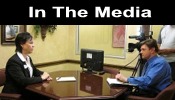By Tom Branch, on March 12th, 2012 
I was out finalizing a lease for one of my clients yesterday. The listing agent was not available so I met with the owner of the property. My clients got stuck in traffic so we had some time to chat. The conversation turned to investment homes.
Many investors confuse rental rates with cash flow assuming that getting the maximum amount of rent equals maximum cash flow. I’ll argue the opposite is usually true.
There are at least two hidden costs that need to be factored into the cash flow equation. The first is vacancy rate and the second is the cost to lease. Both subtract from long-term cash flow.
Any time a property is vacant it’s not producing revenue. Limiting vacancies should be a factor in rental pricing. Let’s assume I have a property rented for $1500 a month on a single year lease. If the tenant vacates the property after the lease ends, I incur the loss of revenue while the property is vacant and I have the cost to lease it. The other “cost” is realizing that most damage to a home happens during turnover. If I can get a good tenant to renew, I avoid all three losses.
While you may need to raise the rent on a renewal to cover increased expenses, this increase may cause our tenant not to renew. If I raise the rent on my $1500 property to $1600, I hope to generate another $1200 a year in cash flow. If the tenant moves out and the property takes 30 days to lease, I’ve lost $1500 plus I have the cost of leasing the property. The best time to consider raising rental rates is in between tenants.
The other place to consider this concept is when a tenant is asking for a reduced rental rate on a multi-year lease. On my $1500 rental, I will often reduce the rent to $1450 for a two-year lease. Why? Long-term cash flow. I know I will not have any downtime after a year and I will not have the cost to lease it again. The $50 a month reduction is $1200 over the two-year lease. If I have 30 days of vacancy and I have to lease it, my loss of revenue and expense to lease it can reach $2400 in my market. Additionally, I have to pay for utilities and lawn maintenance while I’m leasing it.
Maximum rent does not alway equal maximum cash flow.
Want to work with an experienced team of agents on your next investment property? Contact us at 214-227-6626.

Photo licensed from iStockPhoto
By Tom Branch, on January 21st, 2012 
The Internal Revenue Service has issued a 255-page guide in the Federal Register. The new rules, which went into effect on January 1, change the way investors can deduct repair and improvement expenses.
In the past, most investors took the one-time deduction of the repair or improvement expense during the tax year in which it was done. The new rules clarify what is a repair and what is an improvement.
An ordinary business repair of an asset is generally tax-deductible in the current tax year. An improvement is usually classified as a capital expenditure and gets depreciated over time.
Eric Lucas, a principal at KPMG LLP and a former Treasury Department tax counsel, said in an interview that this one of the more significant changes” from current accounting policy and could be troublesome for businesses that took “an aggressive view” in deducting repairs.
Investors should discuss these changes with their CPAs or Tax preparers now in order to make preparing their 2012 tax returns easier next year.

Photo Licensed from iStock Photo | Blog based upon a story published in Inman News
By Tom Branch, on December 8th, 2011 
Welcome to Allen! Our residents enjoy a wholesome community atmosphere with something for everyone. The City boasts an award-winning park system featuring neighborhood and community parks, hike and bike trails, and greenbelts. City facilities include a 27-hole public golf course, a large fitness and aquatic center, a recreation center, youth center and extreme sports park, a senior recreation center and a 54,000 square feet public library.
Allen ISD offers a diversified curriculum with 13 elementary schools, three middle schools, a freshman center and a high school. The high school campus (582,000 square feet) features an on-site Collin County Community College campus.
Leases and rental homes are readily available with prices ranging from $850 to $4000+ a month.
Click here to see all Homes for Lease in Allen Texas.
For more information or to schedule a showing, contact us at 214-227-6626.

Photo: Copyright Imaged2Sell
By Tom Branch, on December 6th, 2011 
I’m a huge fan of McKinney, Texas. Nestled in the rolling hills just north of Dallas, this vibrant community has so much to offer–great schools, plentiful shopping, dining, golf, entertainment, and easy access to the Metroplex.
According to the McKinney TX Website:
Just 30 miles north of downtown Dallas, McKinney is a picturesque city with a small-town feel that is quite different from the Metroplex’s urban sprawl. Our friendly charm, green spaces and comfortable pace belied the fact that McKinney, with a population of more than 133,500, is one of the fastest-growing cities in America.
The city also has a fair number of single family homes for lease. Rental prices range from about $1000 to over $5000 a month depending upon the size and location.
Click here to search for McKinney Texas homes for lease.
If you need more information or want to schedule a showing, contact us at 214-705-2470.

Photo: Copyright 2009 – Tom Branch
By Tom Branch, on November 28th, 2011 
As property managers for about a dozen homes in the North Dallas area, we are often asked what has to be repaired and who pays for the repair. It’s not just our tenants who ask, but our homeowners as well. The answer to the question is found in the Texas Property Code and the lease between the parties.
The Texas Property Code, paragraph 92.052 outlines the owner’s requirement to make repairs. Basically, the tenant notifies the owner of the need for a repair, the tenant must be current on all rental payments, and the condition materially affects the physical health or safety of an ordinary tenant. Further, unless the condition was caused by normal wear and tear, the landlord does not have to repair damage caused by the tenant, their family or guests.
The Texas Association of REALTORS® Residential Lease goes into greater detail in paragraph 18. The owner will pay the entire cost of repairing the heat, air conditioning, hot water heater, or water penetration into the home from structural defects unless the damage was caused by the tenant.
It also states that the owner will not pay to repair any items damaged by the tenant, water stoppages caused by foreign objects, or items that are cosmetic in nature.
In some of the older versions of the lease, there was a requirement for the tenant to pay a deductible for repairs to the property. The Texas Association of REALTORS® deleted that paragraph as it was inappropriately applied to all requested repairs. Some property managers are putting that verbiage into the Special Provisions of the lease but it should not be applied to all repairs.
It’s also important to note that not all owners use the Texas Association of REALTORS® Residential Lease but the repair process, what will/will not be repaired, and who pays should be in the lease. When in doubt you should seek proper legal advice.
Have a question or need more information? Contact us at 214-705-2470.

By Tom Branch, on June 2nd, 2011 
I did an interview with Gary Sutton with WSBA in York, PA on June 1st.
It was a follow-up piece to an article published in USA Today titled, “More Than 500 Cities See More Homes Become Rentals.” The authors wrote, “In the aftermath of the nation’s housing-market collapse and recession, more than 500 midsize and large cities have seen a rise in the share of homes that are rented rather than owned”
Most of the cities with the higher changes towards renters were same cities hit hard by the mortgage meltdown and subsequent foreclosures. I saw another news story showing that home ownership peaked at 69 percent and had dropped to 66 percent .
Clearly this should not be a big surprise. Not only did we have a housing bubble, but a home ownership bubble as well. Further, the people who lost their homes to foreclosure still need a place to live and will likely be tenants for a number of years.
The good news is that investors are buying homes in these areas and rather than flipping them as they did in years past, they are converting them into income-producing rental properties1. It’s a great time to purchase income-producing properties as prices have dropped, interest rates are low, and the demand for rental homes is up.
Contact us for more information on investing in income-producing real estate.

1. See “Flipping Versus Income Producing Real Estate Investing“
|
|
![]()









You must be logged in to post a comment.